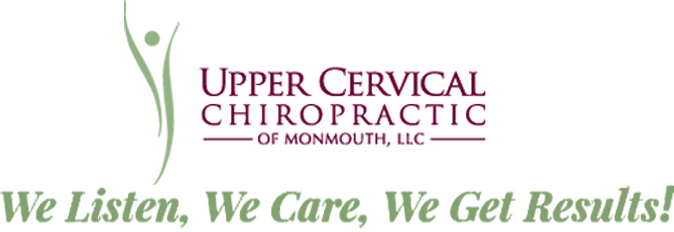How long does it take for QSM3 upper cervical chiropractic to work?
When you’re in pain, one of your biggest questions is: When will the pain stop? We understand. Countless patients come to our Monmouth County, NJ upper cervical chiropractic practice in search of a therapy that will stop the pain.
Our practice specializes in Quantum Spinal Mechanics (QSM3), a method of chiropractic care that focuses on relieving spinal misalignments with extra attention to the upper cervical region. When this area is out of alignment (aka, subluxation), stress can be placed on the nervous system resulting in various spinal and neurological conditions/symptoms.
These conditions include chronic headaches, migraines, back pain, Ménière’s disease, vertigo, and insomnia.
Unlike the practice of medicine which focuses on the treatment of symptoms, chiropractic focuses on reducing nervous system interference by correcting spinal subluxation(s). The correction of spinal subluxation is so often accompanied by a reduction in a patient’s symptoms, it appears adjustments are treating pain. However, they’re not…
Our nervous system is responsible for the growth and repair of our bodies. If there is nervous system interference in the spinal cord or exiting nerves, the ability of the body to heal, function correctly and repair itself is greatly diminished.
By releasing the spinal misalignments and compression through precise, gentle adjustments, QSM3 can help facilitate the body’s natural healing capabilities. In turn, this frequently provides lasting relief from the discomfort and disruptive symptoms that the patient is experiencing.
The patient typically assigns the credit for their relief to the adjustment or the chiropractor. In actuality, tey should be assigning the credit of their body’s recovery to themselves. The chiropractic adjustment simply facilitates the patient’s healing response. The patient is the healer, the chiropractor is the facilitator. Patients always heal from the inside-out, not outside-in.
Table of Contents
Phases of QSM3 Care
QSM3 upper cervical chiropractic focuses on correcting the entire spine through the neck. This begins with an extremely precise assessment process using highly advanced technology which provides critical data about the condition of your nerves and spine. This includes computerized neurological testing, a non-invasive, painless diagnostic tool that measures the function of the nerves in your spine along with specialized x-ray imaging to properly assess your spinal mechanics and determine the presence of degenerative disc disease.
Following this detailed assessment process, our skilled chiropractors use finely targeted, gentle adjustments to correct these misalignments. Upper cervical chiropractic care is highly effective and every person and condition takes their own time to respond to care based on many factors.
Corrective Chiropractic are is typically categorized into three phases:
- Initial Intensive Care: The first phase of care is where the corrective process begins. The chiropractor(s) will start to deliver adjustments on a higher frequency to initiate better alignment while reducing stress from the nervous system. Patients in the initial intensive phase need to be seen more frequently to disrupt the postural and neurological patterns that have developed through the years. Regular re-evaluations are performed to determine progress.
- Corrective, Stabilization, and Rehabilitative Care: The initiation of the second phase of care signifies that the patient has started to make structural and functional progress. Often the frequency of care will begin to reduce however continued consistent care will be delivered to strengthen and stabilize the changes achieved in the first phase of care. Continued care often provides lasting structural and neurological changes that may make recovery possible versus temporary pain relief. Regular re-evaluations are performed to determine progress.
- Maintenance or Wellness Care: Most people enter our offices to relieve their pains or symptoms. We, too, want to help a patient’s body relieve their symptoms as soon as possible. However, pain relief is only one benefit that Chiropractic care can offer. Listed below are some of the reasons we recommend a maintenance or wellness program:
- Relief from your symptoms. Relief from the pain or symptom that motivated you to seek care at our office is most often the first benefit of your Chiropractic care.
-
- Structural and postural changes. Most patients experience positive changes in their spinal structure and posture.
- Functional improvement. Your body systems will have a chance to return to full functional capacity, and your health will return with long-term care. You will experience an improvement in your health expression.
- Spinal degeneration slows or stops. The subluxation process is slowed or stopped with long-term Chiropractic care.
- Healing. Healing is the regeneration of the damaged cells and tissues of the body and the reintegration of the body, mind, and spirit.
- Improved quality of life. When your pain and symptoms are gone, and when your immune system is functioning at a higher capacity, the quality of your life will be substantially better. A longer, healthier life is often the result of long-term Chiropractic care.
Long-term problems generally require long-term solutions. The stress factors that caused a patient’s problems will probably still be very much at work in their life. After they receive a chiropractic adjustment, they usually return to the environment that caused or contributed to your problem in the first place. This is why we recommend Maintenance Care, rather than just short-term Relief Care. Naturally, the choice of how much care a patient desires is entirely up to them and their decision is always supported.
Factors That Will Affect QSM3 Treatment Time Frames
There are other factors that play a part in the length of time it takes people to heal while under QSM3 care takes to provide pain and symptom relief. For instance, the severity and time that a patient has been experiencing a condition can affect the time it takes to treat it. Long-standing neck pain, for example, can take longer to treat than a relatively new pain condition. The chronicity of the underlying condition, such as long-standing degenerative disc disease, a history of disc herniations and/or stenosis as well as prior surgeries can all affect the prognosis and healing time.
Additional factors include a patient’s lifestyle (i.e., exercise, diet/nutrition, sleep and mental/emotional health), history of physical or emotional trauma, and co-morbidities (i.e., diabetes, obesity, auto-immune disease and other underlying medical conditions). None of these factors should preclude a patient from seeking help or healing. However, they may play a factor in the extent and amount of time it takes a patient to heal.
A patient’s current physical condition as well as their medical history will also influence healing times. For example, a person who suffers from chronic inflammation may have a more challenging time with tissue repair than someone who is inflammation-free. Each patient’s body is unique, which means that each individual, even those with the same condition, may take different amounts of time to begin healing and experience relief.
Examples of QSM3 Treatment Timeframes
Although there are many factors that contribute to a treatment timeline, it’s helpful to go into the process with more than just knowing “it varies.” Having an example of a QSM3 treatment timeline will give you some perspective on the duration of therapy.
What to Expect with Upper Cervical Care for Ménière’s Disease and Vertigo Relief
Ménière’s disease is often a chronic disorder that remains somewhat mysterious to the mainstream medical community. The condition is associated with symptoms particularly that make you feel like you and your surroundings are spinning (known as vertigo), along with other symptoms such as hearing loss and ringing in the ear. This condition can be quite debilitating, with vertigo symptoms appearing out of nowhere and potentially lasting for hours at a time. During these spells, it’s incredibly hard to function as normal and many patients miss work and family activities because they are confined to their bed during these spells.
If you suffer from Ménière’s disease or vertigo, it’s understandable that you want the condition resolved as soon as possible. With our QSM3 care, we focus on determining whether an upper cervical issue is contributing to your Ménière’s disease. Once an assessment is completed, with regular visits at the suggested cadence of your chiropractor, you can expect to begin to experience relief within a few weeks. In some cases, patients report relief within the first few visits. It may however take several months for significant improvements to occur.
If you’re seeking vertigo relief or a treatment for Ménière’s disease, QSM3 may provide a ray of hope for a stubborn, often misunderstood or misdiagnosed condition. By addressing the physical trauma that may have occurred to the upper cervical region years ago (as far back as childhood), QSM3 provides alignment that helps to heal irritated nerves which may result in dizziness, vertigo and other unpleasant Ménière’s disease symptoms.
Setting Realistic Expectations for Your QSM3 Care
We believe in helping inform patients with facts supported by scientific, evidence-based research. Informed patients make better decisions and our goal is to always provide full transparency to build trust that is essential to a beneficial patient-doctor relationship.
To help make the most of your care, it’s important to maintain consistent visits and follow your recommended care plan. This is essential to maintaining the healing momentum the QSM3 care is providing. QSM3 aims for long-term correction of the underlying spinal misalignment, not just temporary pain relief. That means it’s may not be a quick-fix band-aid therapy, but a long-term solution that addresses the underlying cause of your pain or discomfort. So it’s important to be patient and committed to the process so that you can enjoy the long-lasting benefits that come with proper alignment.
Schedule a consultation with one of our qualified QSM3 chiropractors who will begin with a personalized assessment. If you’re worried about the length of a treatment process, the best way to tackle this issue is to not delay treatment any longer. Now is the perfect time to begin the healing process.

Dr. Arbeitman
Dr. Arbeitman, a trailblazing figure in Upper Cervical Chiropractic, established Upper Cervical Chiropractic of Monmouth, LLC in 2005. Dedicated to promoting holistic wellness, he has empowered countless individuals to embrace Upper Cervical Chiropractic care as an integral part of their health journey. Graduating Magna Cum Laude from Logan College of Chiropractic and holding a Bachelor of Science in Kinesiological Sciences from the University of Maryland at College Park, Dr. Arbeitman is a licensed practitioner in New Jersey who has met the rigorous standards set by the National Board of Chiropractic Examiners. Beyond his extensive educational achievements, he has earned multiple scholarships and accolades for his academic prowess and exemplary clinical performance. Dr. Arbeitman's holistic approach encompasses spinal and nervous system care, lifestyle guidance, fitness evaluation, and nutritional expertise, all founded on the belief that the doctor-patient relationship is paramount to the healing process.




